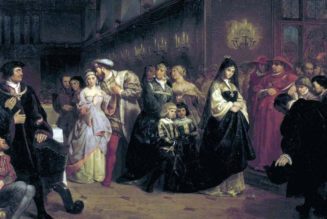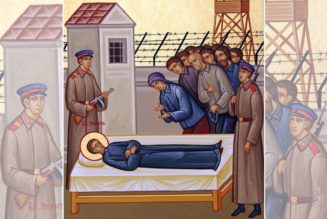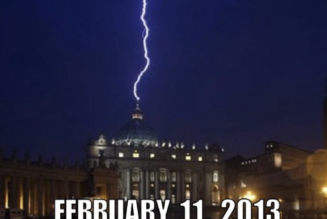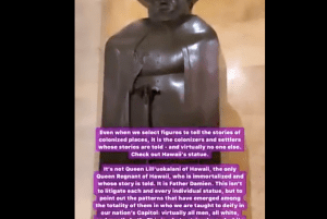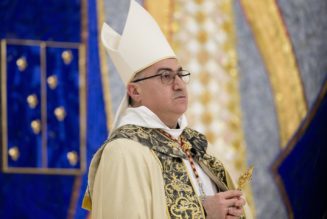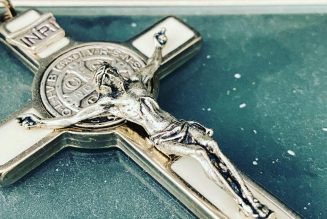Matthew opens his Gospel with a genealogy stretching from Abraham down to Jesus (Matt. 1:1-17). The final part of this genealogy reads:
And Jacob [was] the father of Joseph the husband of Mary, of whom Jesus was born, who is called Christ (Matt. 1:16).
Luke also gives a genealogy, except his stretches from Jesus back to Adam, the original “son of God” (Luke 3:23-38). The initial part of it reads:
Jesus, when he began his ministry, was about thirty years of age, being the son (as was supposed) of Joseph, the son of Heli (Luke 3:23).
Both genealogies have fascinating aspects that would require considerable discussion, but here we’re interested in a specific question: Who was Jesus’ grandfather?
According to both of the passages we’ve just read, Jesus was the (legal) son of Joseph, but Matthew indicates that Joseph’s father was named Jacob, while Luke says Joseph was the son of Heli.
How can this be explained?
At first glance, it looks like Matthew and Luke are preserving two different lines by which Jesus’ ancestry goes back to David, and these two lines join at Joseph. Our question is: How does that joining work?
Why Trace Jesus’ Ancestry by Different Lines?
Before going further, it will be useful to discuss why Matthew and Luke would trace Jesus’ genealogies through different lines, because it is very obvious that they do.
Most famously, they trace his ancestry through different sons of David. Matthew traces it through the line of David’s son Solomon, while Luke traces it through the line of David’s son Nathan.
We should begin by pointing out that it is not at all unexpected Jesus would be descended from David in more than one way.
People tend to marry within their own community, and so if you go back multiple generations, it is very common to find that someone is descended from an individual in more than one way.
Given how tight-knit Judean culture was, it would be inevitable—over the course of a thousand years—that Jesus would be descended from David in more than one way.
By way of parallel, England’s Queen Elizabeth II is descended from William the Conqueror (who lived a thousand years before her) in multiple ways. For example, she is descended from him both by the line of William’s son Henry I of England and by the line of William’s daughter St. Adela of Normandy. (For more information, see Day 85 here.)
The question for us is: Why would Matthew and Luke use different lines?
Part of the answer may be as simple as, “These were the lines that they had documentation for when they were writing their Gospels. They used the genealogical information that was available to them.”
However, there also may be other reasons, and the decision to either trace through Solomon or Nathan is not difficult to solve.
After King David’s time, the line of Judean kings passed through Solomon until the Babylonian Exile, when the line ended with Jeconiah (aka Jehoiachin).
The prophet Jeremiah then issued a curse from the Lord on Jeconiah, stating “none of his offspring shall succeed in sitting on the throne of David, and ruling again in Judah” (Jer. 22:30).
However, according to various Jewish sources, this curse was later lifted, which would mean Jeconiah’s descendants would again be eligible to be kings. (For more information, see Day 95 here).
The result was that there was a doubt about whether future legitimate kings of the Jews would need to come from the line of Solomon or from another line of David’s sons.
A difference of opinion on this issue would admirably explain why Matthew uses one line and Nathan the other.
-
- For those who believed legitimate kings needed to come from the line of Solomon, Matthew shows how Jesus’ ancestry is traced through him.
- And for those who believe legitimate kings could not come from the line of Solomon, Luke shows how Jesus is descended from David by way of Nathan.
And—since Jesus is descended from David in more than one way—those different lines join up again at some point, and we’re interested in the merging of the lines that seems to happen in the generation before Joseph.
So, why does Matthew describe Joseph’s father as Jacob, while Luke describes him as Heli?
Joseph and Mary: A Common (and Incorrect) Explanation
A common explanation of the difference is that Matthew gives us Joseph’s genealogy, while Luke gives us Mary’s.
This is perhaps understandable in that Matthew’s infancy narrative (Matt. 1-2) focuses on Joseph, while Luke’s infancy narrative (Luke 1-2) focuses on Mary.
However, any simple version of this theory encounters a huge problem: Mary is not mentioned anywhere in Luke’s version of the genealogy (Luke 3:23-38).
No matter how popular or attractive this view may be to some, no simple version of it can be supported from the text.
The way the genealogies are written, both of them are genealogies of Joseph.
Understanding that to be the case, how can we explain the fact that Matthew lists Joseph’s father as Jacob and Luke lists him as Heli?
1) By Any Other Name?
One way it could hypothetically be explained would be by a difference in names. People in the ancient world—including in the Bible—sometimes went by more than one name. In fact, we see this repeatedly in the first generation of Christians (Simon/Peter, Joseph/Barnabas, Saul/Paul, John/Mark).
Sometimes this was because a person had acquired a nickname (thus Simon and Joseph acquired the nicknames Cephas/Peter and Barnabas). Sometimes it was because they were operating in a different cultural environment (thus Saul and John used their Roman names Paul and Mark when dealing with non-Jews). And there could be other reasons.
In principle, Jacob and Heli could be two names for the same individual.
This is more possible than you might initially think. If we look one generation further back, Matthew tells us that “Matthan [was] the father of Jacob” (Matt. 1:15), and Luke tells us that Heli was “the son of Matthat” (Luke 3:24).
It is very common to find variant spellings in ancient documents—including genealogies—and the names Matthan and Matthat are so close that some scholars have suggested this is just a variant spelling and that Matthan/Matthat was a single person.
In that case, Jacob and Heli might have been two names that his son was known by, and the question of who Joseph’s father was would be solved: He was a man who went both by the name Jacob and by the name Heli.
This would not solve every question about the genealogies, because prior to Matthan/Matthat the lines diverge again (see above), but it would resolve this issue.
However, the “two names” theory is not the only one we need to consider.
2) Skipping Generations
A notable fact about ancient Israelite genealogies is that they often skipped generations.
This was in part because Hebrew and Aramaic had no kinship terms for “grandfather,” “great grandfather,” or “great-great grandfather.” Similarly, they had no kinship terms for “grandson,” “great grandson,” or “great-great grandson.”
Instead, any male ancestor of yours was referred to as your father, and any male descendant of yours was referred to as your son (see Day 106 here).
This is why Jesus can be called the “son of David” (Matt. 1:1) and how he can inherit the throne of “his father David” (Luke 1:32)—even though David lived a thousand years before Jesus.
Because every male ancestor was a father and every male descendant was a son, you didn’t need to list every generation in a genealogy, and it’s clear that ancient authors sometimes skipped them—either for reasons of brevity or to make a point.
For example, Matthew deliberately skips generations in order to present his genealogy as 3 sets of 14 generations (Matt. 1:17). By looking at the Old Testament genealogies—which Matthew was certainly aware of—you can see many of the generations he’s skipping.
The likely reason he uses three blocks of 14 names is that in Hebrew and Aramaic the name David adds up to 14 (D + V + D = 4 + 6 + 4 = 14). The genealogy thus implicitly conveys the idea “David! David! David!” Matthew is making the point that, under God’s providence, Jesus is the legitimate and ultimate Son of David, the Messiah.
We also know that Matthew is skipping generations in the period covered by the final 14 names. Raymond Brown points out:
The spans of time covered by the three sections of the genealogy are too great to have contained only fourteen generations each, since some 750 years separated Abraham from David, some 400 years separated David from the Babylonian Exile, and some 600 years separated the Babylonian Exile from Jesus’ birth (The Birth of the Messiah, 74-75).
If there were only 14 generations in a 600-year period then the average age of fatherhood for each generation would have been 43 years old, and that’s too high. Fathers have some children earlier and some later, but in the ancient world it was not normal to have your middle (“average”) child at 43.
If we go with a more reasonable estimate of a middle child being born to a father who is 30 years old, we should expect 20 generations during this period, suggesting that Matthew has skipped at least 6 generations.
That’s relevant to our question because, as soon as you skip a generation, you double the number of “fathers” in this system of reckoning.
For example: My name is Jimmy, and my father’s name also was Jimmy (I’m a junior). However, if you skip my father’s generation and look at my male ancestors one generation further back, there are two: My paternal grandfather Howard and my maternal grandfather Allen.
If we were composing an Israelite-style genealogy for me, and if we skipped my father’s generation, I could be described either as “Jimmy the son of Howard” or “Jimmy the son of Allen,” depending on which line of ancestry you wanted to focus on.
Now here’s the point: This could be what’s happening with Joseph.
We have strong evidence that Matthew skipped something like 6 generations in this segment of his genealogy, and Luke may have done so also.
If any of these skipped generations was the one before Joseph, then the issue is resolved:
-
- If Matthew skipped the generation before Joseph, then Heli may have been Joseph’s father and Jacob one of his two grandfathers.
- If Luke skipped the generation before Joseph, then Jacob may have been his father and Heli one of his two grandfathers.
- If both Matthew and Luke skipped the generation before Joseph—or if there is more than one skipped generation before Joseph—then the options multiply further.
In any case, a single skipped generation before Joseph, by either author, would explain what we see.
3) Adoption
Not everything you see in a genealogy is to be explained in terms of biological relationships. They also include legal relations.
Today, if a husband and wife have several kids together but also adopt a child, the adopted child will be listed in their family tree alongside their biological children.
The same was true in ancient genealogies. In fact, in a tribal/patriarchal society like ancient Israel, it was extremely important to know your family line, because it dictated how you would relate to other Israelites.
To be part of Israelite society, you had to be a member of one of the twelve tribes, and when a person from another culture joined the people of Israel, he had to be legally adopted into one of the tribes.
We see an example of this with Caleb—one of the two faithful spies at the time of Moses. Caleb is introduced as “the son of Jephunneh” (Num. 13:6), and Jephunneh is identified as a Kennizite (Num. 32:12). The Kennizites, in turn, were a Canaanite people (Gen. 15:19), so it appears that Caleb actually had Canaanite ancestry.
This is not surprising, since Egypt was a major world power and quite cosmopolitan. Many people from surrounding cultures ended up there—including Canaanites—and some of them allied with the Israelites at the time of the Exodus and left Egypt. Exodus 12:38 records that many foreigners departed with them.
As a person of Canaanite ancestry, Caleb decided to go with them and eventually became so allied with the Israelites that he became one of them. Thus, he was adopted into the tribe of Judah, and the patriarch Judah became his legal ancestor.
Note that, in this case, the name of Caleb’s biological father—Jephunneh—has been preserved, in addition to his new, legal ancestry.
Jesus’ genealogy also incorporates the concept of legal descent, for Jesus was Joseph’s legal son, but not his biological son. Jesus was adopted by Joseph (cf. Luke 2:48) and enrolled into his genealogy.
In part because of higher mortality in the ancient world, adoption was not uncommon, and its use in Jesus’ genealogy alerts us to the possibility that it may appear more than once.
It is possible that some of the junctures in Matthew’s and Luke’s genealogies could be due to legal adoption in which—like Caleb—a figure’s biological parentage has been preserved as well as his new, legal parentage.
Further, since people often take care of the children of their deceased relatives—and sometimes adopt them—it would not be unnatural if, in the thousand years between David and Christ, members of some lines of Davidides adopted members of the extended family, uniting the lines in genealogical terms.
For example, suppose that Joseph was Heli’s natural son, but Heli died prematurely, and Joseph was adopted by Jacob. In this case, Joseph would be the legal son of Jacob but the biological son of Heli.
4) Heiresses
A special form of Israelite adoption could involve heiresses. Under normal circumstances, Israelite women did not inherit property, but it was important to keep land within the family, and if a man died without sons, his property could be inherited by his daughters—making them heiresses.
The most famous case involves the daughters of Zelophehad of the tribe of Manasseh, who died during the Exodus. He had no sons, so his daughters were allowed to inherit a portion of the territory of Manasseh in the Promised Land (Num. 27:1-11).
However, this created a new issue, because normally women were not required to marry within their tribe. If the heiresses of Zelophehad married outsiders, their land would pass from Manasseh to a different tribe.
As a result, a law was instituted that heiresses could only marry within their own tribe so that the tribe would not have its territory depleted over time (Num. 36:1-12).
Not only was it important to preserve family property, it also was important to preserve the name of a man with no sons, and this sometimes happened through his daughters.
In 1 Chronicles 2:34-35, we read about a man named Sheshan who had no sons but only daughters. To carry on his line, Sheshan married one of his daughters to an Egyptian slave of his named Jarha. As a result, the daughter bore a son named Attai, who carried on Sheshan’s line.
In Ezra 2:61 and Nehemiah 7:63, we read of a priest named “Barzillai (who had taken a wife from the daughters of Barzillai the Gileadite and was called by their name).”
In 1 Esdras 5:38, the priest’s name is given as Jaddus, and the daughter of Barzillai’s name is given as Agia. Whether or not these were their actual names, it has been proposed that Agia was an heiress, and Jaddus married her, he took Barzillai’s name to preserve it since there were no sons to carry on the line.
In view of the function of heiresses to preserve their father’s legal line, it has been proposed that this may explain the situation with Joseph.
According to this view, Mary had no brothers and so was an heiress (as suggested by the second century document known as the Infancy Gospel of James or Protoevangelium of James). And so—as an heiress of the tribe of Judah—when Joseph married her, he gained the legal heritage of her father, Heli.
It should be pointed out that this is not the same as the common claim that Matthew’s genealogy is Joseph’s and Luke’s is Mary. Mary is not mentioned at all in Luke’s genealogy, and it cannot simply be “her’s.”
On this view, both genealogies are Joseph’s, with Matthew giving Joseph’s heritage through his biological father Jacob and—with Mary being an heiress—Luke giving Joseph’s alternative heritage through his legal-father-by-marriage (i.e., father-in-law) Heli.
5) Levirates
Heiresses were not the only way a sonless man’s line could be preserved. A more common way was through the custom of the levirate marriage.
In Latin, a levir is a brother-in-law, and a levirate marriage is one in which a woman marries her brother-in-law.
This practice was used in numerous Ancient Near Eastern cultures, and under the Mosaic Law, this was required when a man died without a son:
If brothers dwell together, and one of them dies and has no son, the wife of the dead shall not be married outside the family to a stranger; her husband’s brother shall go in to her, and take her as his wife, and perform the duty of a husband’s brother to her.
And the first son whom she bears shall succeed to the name of his brother who is dead, that his name may not be blotted out of Israel (Deut. 25:5-6).
This custom was common enough that it found and explicit treatment (and a rather lengthy one; Deut. 25:5-10) in the Law of Moses, and it is mentioned in all three of the Synoptic Gospels in the account of the Sadducees’ question (Matt. 22:23-33, Mark 12:18-27, Luke 20:27-40).
The firstborn son would thus be the biological child of the levir but the legal child of his deceased brother.
This custom was common enough that it is found at least twice in the case of Matthew’s genealogy of Jesus—once in the case of Tamar (Matt. 1:3, cf. Gen. 38:8ff) and again in the case of Ruth (Matt. 1:5, cf. Ruth 4:10).
And it has been proposed that this is the explanation for Joseph’s two fathers—that they were brothers, and one was his biological father and the other his legal father.
Support from Jesus’ Family?
The levirate view is the earliest surviving answer we have to the question at hand, and it comes from very early indeed (see Day 162 here).
Around A.D. 200, the early Church historian Julius Africanus wrote a letter in which he addressed the subject. Large portions of this letter are preserved by Church historian Eusebius (see Church History 1:7).
And Africanus indicates his source: It was the extended family of Jesus, which continued to be known down to the mid-3rd century (c. A.D. 250; see Richard Bauckham, Jude and the Relatives of Jesus in the Early Church, 45-133).
At the time, Jesus’ extended family was known as the Desposunoi (from the Greek term despotês, “master”). The Desposunoi were the family of Jesus, “the Master,” and Africanus was in a good position to know about things they said. Richard Bauckham notes:
Since he was born in Jerusalem (Aelia Capitolina) and lived part of his later life at Emmaus (Nicopolis), he would have had access to Palestinian Jewish Christian traditions. Descendants of the family of Jesus were certainly still living in Nazareth in his lifetime (op. cit., 355-356).
According to Julius Africanus, Jesus’ extended family indicated that Joseph was the child of a levirate marriage. The two brothers were Jacob and Heli (aka Eli), and according to Africanus:
Thus, we shall find the two, Jacob and Eli, although belonging to different families, yet brethren by the same mother.
Of these the one—Jacob—when his brother Eli had died childless, took the latter’s wife and begat by her a son Joseph, his own son by nature and in accordance with reason.
Wherefore also it is written [in Matthew]: “Jacob begat Joseph.”
But according to law he was the son of Eli, for Jacob, being the brother of the latter, raised up seed to him (Church History 1:7:9).
Africanus also preserves the name of the mother of Jacob and Heli—a name not given in the Bible but preserved by Jesus’ family—as Estha (1:7:8). Africanus continues:
This interpretation is neither incapable of proof nor is it an idle conjecture.
For the relatives of our Lord according to the flesh, whether with the desire of boasting or simply wishing to state the fact, in either case truly, have handed down the following account . . . (1:7:10-11).
Africanus then gives the family’s description of how Herod the Great came to power and how . . .
Herod, inasmuch as the lineage of the Israelites contributed nothing to his advantage, and since he was goaded with the consciousness of his own ignoble extraction [as an Idumean, and thus ethnically a non-Jew], burned all the genealogical records, thinking that he might appear of noble origin if no one else were able, from the public registers, to trace back his lineage to the patriarchs or proselytes and to those mingled with them, who were called [foreigners].
A few of the careful, however, having obtained private records of their own, either by remembering the names or by getting them in some other way from the registers, pride themselves on preserving the memory of their noble extraction.
Among these are those already mentioned, called Desposyni, on account of their connection with the family of the Savior.
Coming from Nazara and Cochaba—villages of Judea—into other parts of the world, they drew the aforesaid genealogy from memory and from the book of [Chronicles] as faithfully as possible (1:7:13-14).
Some members of the family of the Lord thus did not remain in their home villages (Nazareth and Kokhaba) and travelled outside of Palestine (confirmed by 1 Cor. 9:5).
They then used the genealogies at the beginning of the book of Chronicles and their own family records to explain Jesus’ ancestry and its messianic significance.
Unlike the former explanations of the relationship of Jacob and Heli—which are possible but rely on conjecture—here we have an explanation that was being reported by Jesus’ own family at a very early date.
Since it is preserved by Julius Africanus, it must predate his time of writing, meaning it was circulating in the second century or even the first.
And it indicates that Joseph did, indeed, have two fathers due to his being the product of a levirate marriage—his legal father being Heli and his biological father Jacob.
Conclusions
There is much more that can be said about Jesus’ genealogies in Matthew and Luke (see here for a discussion of some of them).
However, we have seen that there are multiple ways of answering the question of who Joseph’s “father” was:
-
- Jacob and Heli may have been two names for the same person
- One of the skipped generations may have occurred just before Joseph
- Adoption may have been involved
- Mary may have been an heiress, whose legal ancestry Joseph inherited upon marrying her
- And finally, there is the view that Jesus’ own family was claiming in the early Church—that Joseph was the child of a levirate marriage
There also are other ways of accounting for this that we haven’t covered.
However, we have seen enough to understand that there is no contradiction between Matthew and Luke’s genealogies regarding Joseph unless one assumes that both genealogies (a) are of Joseph and (b) do not involve alternative names, (c) do not have a skipped generation before Joseph, (d) that no adoption was involved, (e) that Mary status as an heiress was not involved, and (f) that there was no levirate marriage.
We are thus very far from having a contradiction.
Join Our Telegram Group : Salvation & Prosperity


